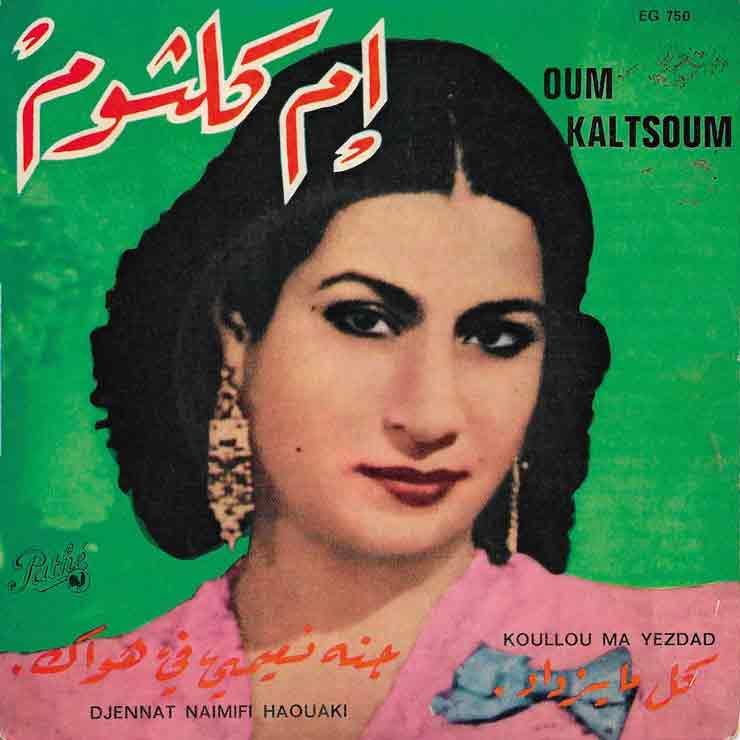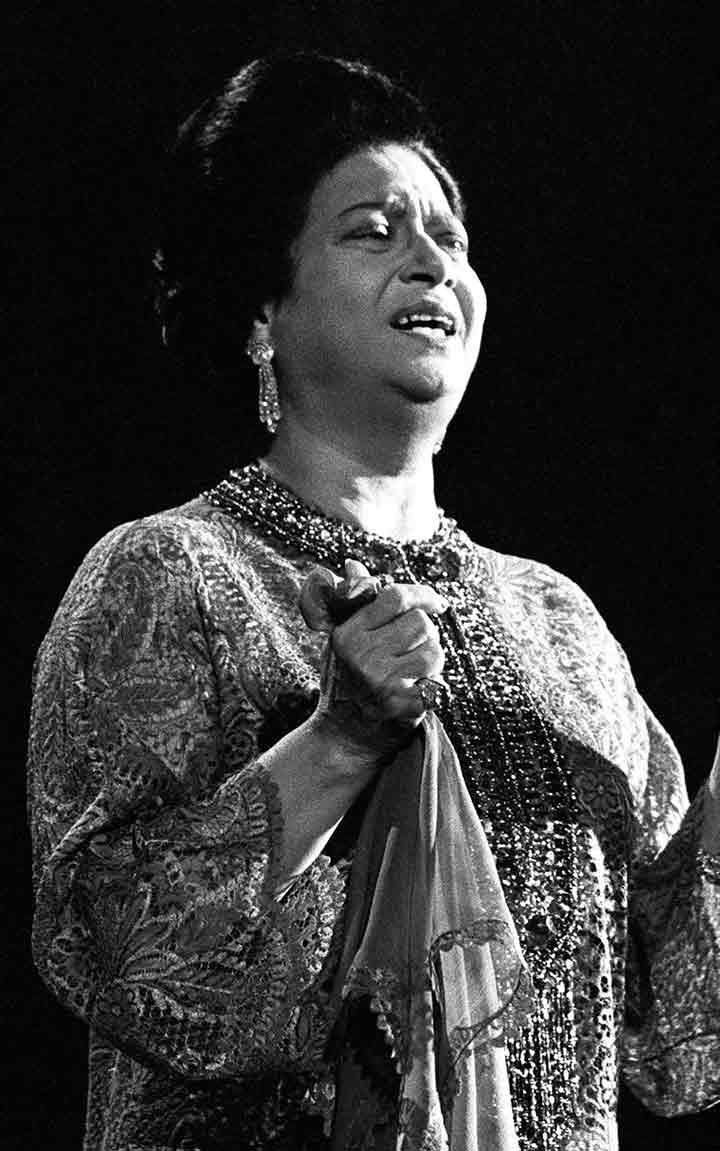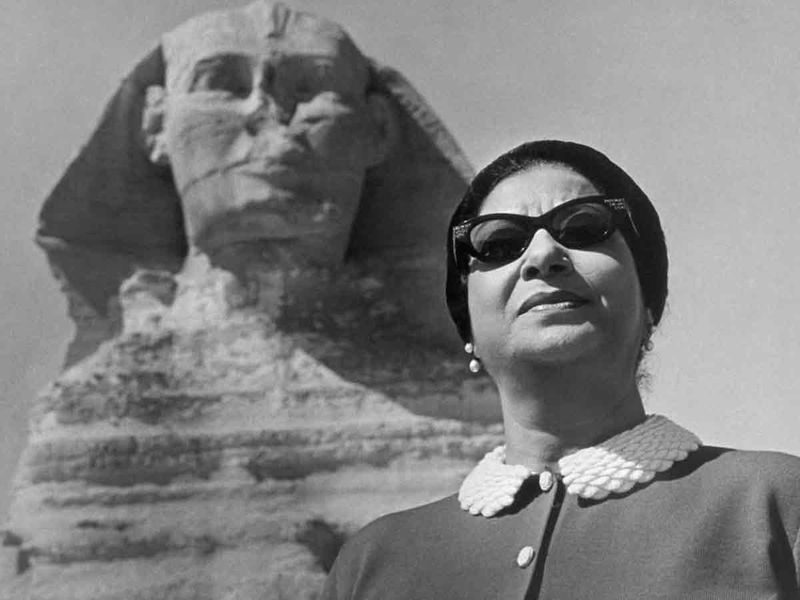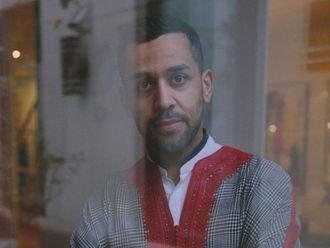Umm Kulthum. While you’re almost assuredly aware of the name, for the uninitiated she was a singer and performer that came to define the voice of several generations and in fact a nation: Egypt.
The curator for this issue, Farrah El Dibany, would know as she is a consummate opera singer herself and knows the value of traditional arts. She specifically picked the recent holographic Umm Kulthum performance at Dubai Opera as an opportunity to expound upon what the legendary singer stood for.
“While Umm Kulthum may have long been gone, thanks to the ingenuity of Dubai Opera, she continues to live on. Don’t believe me? Go and see the show for yourself the next time and experience the magic of her voice. She’s a legend, an icon, immortal and timeless,” says Farrah.

While she is brought back to life at Dubai Opera through her holographic performance – we will get back to that in a bit – some background information is in order. Born in the village of Tamay e-Zahayra, Umm Kulthum, the singer, came from a family that was religious in its leanings. Her father, Ibrahim El-Sayyid El-Beltagi, was a preacher while her mother, Fatmah El-Maleegi, was a housewife. As a young girl, Umm Kulthum learned singing by gleaning what she could from her father teaching her older brother, Khalid. She learned to recite the Qur’an and has exceptional singing talents from a rather young age.
Unsurprisingly, as a fellow Egyptian and an opera singer, Farrah draws inspiration from Umm Kulthum. She says: “As a singer, I am fascinated how she remained iconic all these years, I am amazed how timeless her voice and songs are. I wish I can reach this one day. Also, her stamina is incredible, standing for hours on stage to sing one song, repeating and repeating. Incredible!”
That said, humans are emotional beings and it is fairly easy to romanticise a bygone era, a personality, often beyond reason. However, Farrah thinks that there is more to Umm Kulthum than mere music; not only did she elevate performance arts, she changed public perceptions. “She is essentially the definition of popular! She made classical Egyptian music loved by not just a whole country and the Middle East, she transcended borders and expanded it across the world! She was also very popular among non-Arabic speaking audience which is an incredible achievement in itself,” she says.

Umm Kulthum was a rule breaker, too. She was a woman who had made it on her own in a man’s world – not trivially accomplished in the Middle East, especially in early part of the previous century. Being a strong personality, Umm Kulthum swam against the current and made her way to the top. She performed in Paris at L’Olympia theatre – a remarkable feat in a society that was dominated by men. So one might ask: does Farrah, being the devout fan, perform Umm Kulthum songs herself?
“Several people keep asking me whether I sing Umm Kulthum and I always say that to sing Umm Kulthum I need to be vocally and mentally ready. It needs a lot of practice as I believe one shouldn’t sing her songs just like that. It’s very holy and untouchable, one needs to respect that,” she says. Farrah is not the only one to hold this opinion. In fact, there are currently young Egyptians and people from the wider Middle East who believe that she was one of the greatest singers from the region, bar none.
Speaking of which, if you go on YouTube and search Umm Kulthum, you will find several videos where the youth still have fond memories of the icon. Some are visibly moved at the mere mention of her name and reminisce about their grandparents when they hear her voice, such is her influence to this day.

Briefly, back to the holographic performance. So, how does it work? The process of creating the hologram of a legend is painstaking and can take up to nearly half a year. Despite that, it was surprisingly simpler to bring Umm Kulthum to life – thanks to her personality, because when on stage Umm Kulthum was indomitable and rarely interacted with the audience. The stage was the kingdom she ruled and everyone listened in rapt attention.
Farrah adds: “While I’ve never seen a hologram concert live before, so I can’t tell you what I think about it honestly. I need to experience it first. But from what I hear from people, is that they really enjoy it as they truly feel that the singer is there with them. It must be a new and different live concert experience that I would want to get.”
Finally, we asked Farrah which performer she thinks would be the closest approximation of Umm Kulthum today. Her answer was brief but it sums it all up: “No one. Literally, no one today has all what she had. You can find incredible voices, or popularity, but rarely both in one person.” That’s the legend of Umm Kulthum for you.






